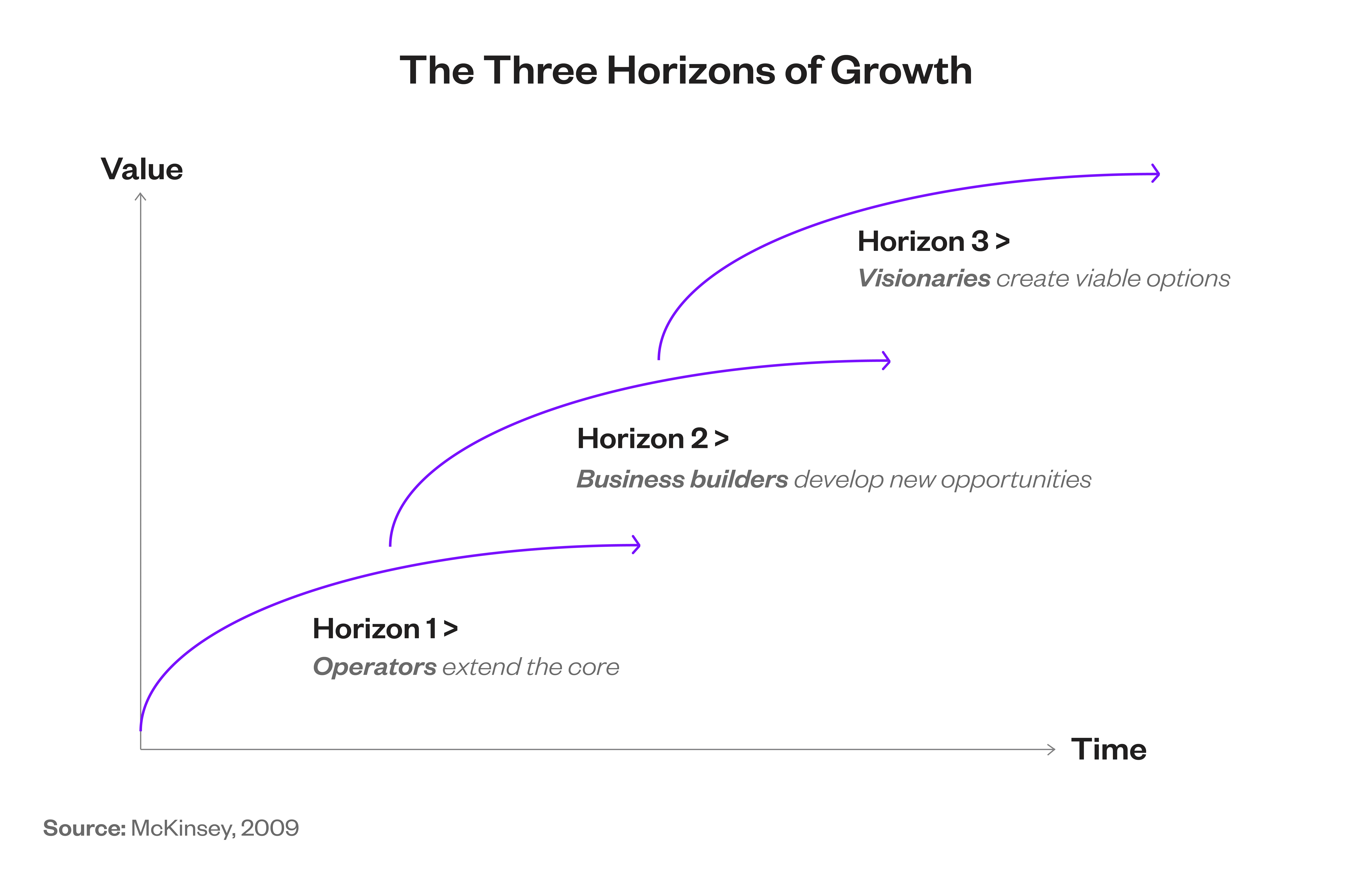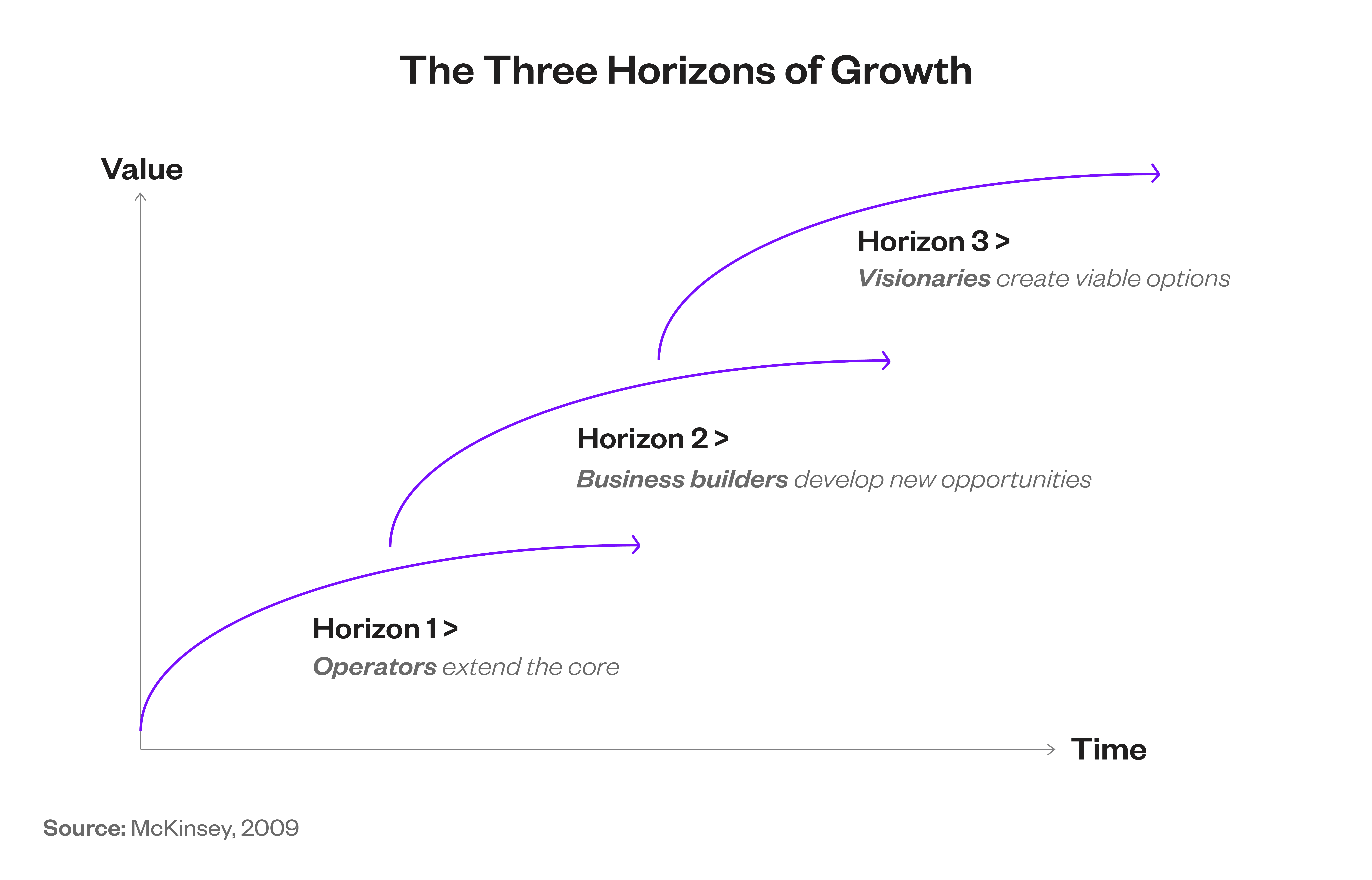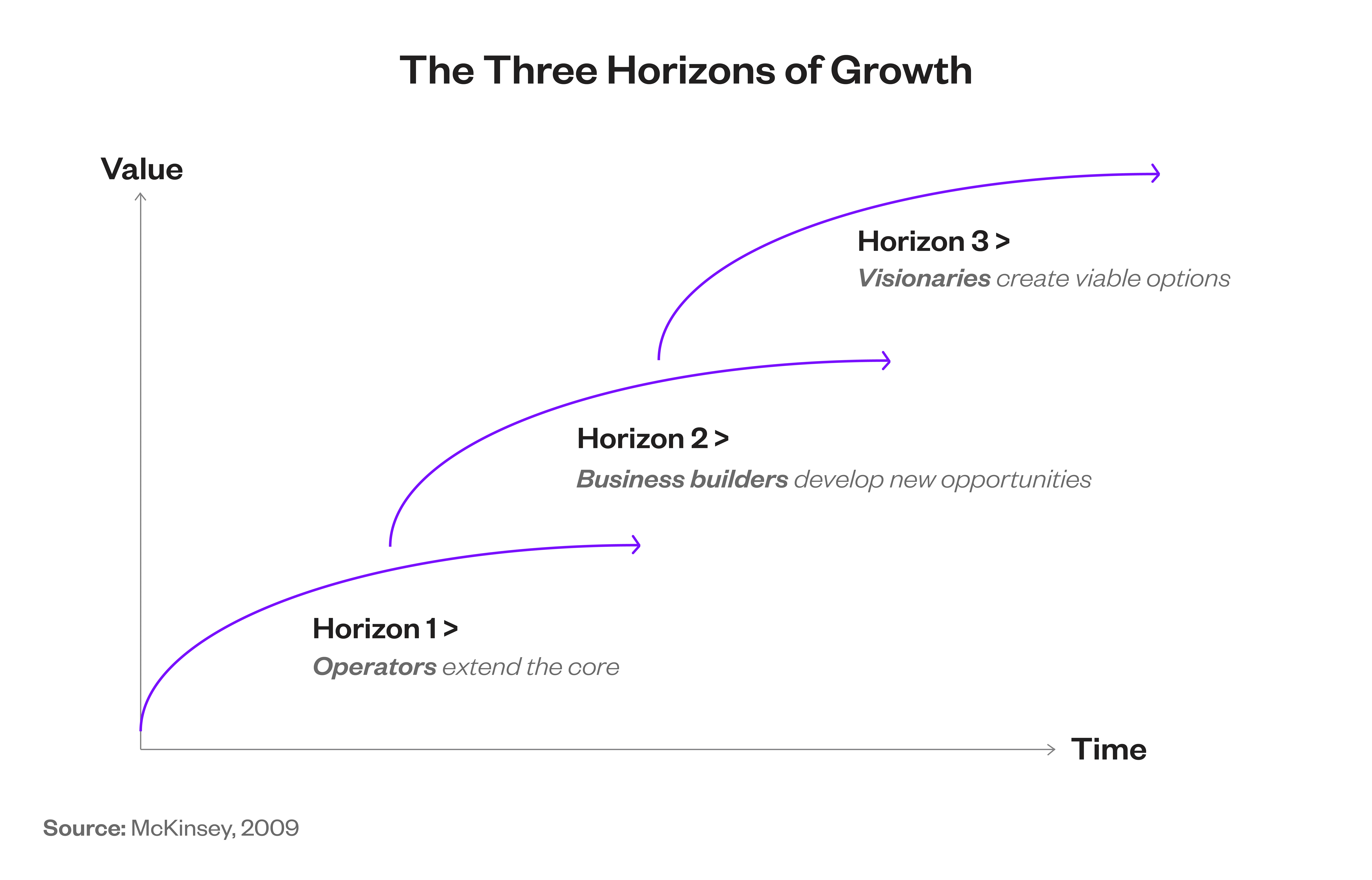Understanding H1, H2, and H3 Innovations
To navigate the complexities of cost optimization while fostering innovation, it's crucial to understand the framework of Horizon 1 (H1), Horizon 2 (H2), and Horizon 3 (H3) innovations.
Categorizing innovations into H1, H2, and H3 innovations, helps organizations to manage their innovation portfolios by balancing short-term efficiencies with long-term growth opportunities.



H1 Innovations
These innovations should focus on the enhancement and extension of existing products, services, and processes that support the business model. H1 innovations are important for driving immediate efficiencies and maintaining competitiveness in the current market.
|
Example:
Microsoft Office 365 transitioned the traditional software suite to a subscription-based model, enhancing user accessibility and securing steady revenue through recurring subscriptions.
|
H2 Innovations
These include emerging opportunities that could substantially transform current business models or open up new markets, and yield growth in the medium term. These innovations build on existing strengths while also exploring new avenues.
|
Example:
Tesla’s Autopilot development, which enhances its electric vehicles with semi-autonomous capabilities, positions the company as a leader in the future market for autonomous driving.
|
H3 Innovations
These innovations comprise transformative ideas and technologies that represent future opportunities for growth, but require significant time and investment to mature. H3 innovations are often disruptive and have the potential to secure companies their entry into entirely new markets.
|
Example:
Google’s quantum computing initiative, aimed at solving problems beyond traditional computing capabilities, holds the potential to revolutionize industries in the long term.
|
Now that we’ve explored the three innovation horizons, let’s dive into how you can strategically focus your efforts across these categories.
Balancing Present Cost Efficiencies with Future Growth
Effective management of H1, H2, and H3 innovations can help companies navigate economic pressures while preparing for future opportunities. Here's where companies should focus their innovation efforts in 2025:
Strategic Focus Across Horizons
H1 Innovations:
Focus: Today's economic environment, has created a heightened emphasis on H1 innovations. Companies are seeking quick wins in the short-term and immediate efficiencies to safeguard their core operations. This involves refining and enhancing existing products, services, and processes to boost profitability and maintain a the company's market position.
Strategic Advice: Due to the current economic uncertainties, it is wise to concentrate efforts on innovations that deliver quick returns and operational improvements. Streamlining processes-for instance, with the use of AI-driven automation tools-can provide rapid benefits without the need for large investments. In the same way, upgrading existing products to meet current customer demand assures quick returns on investment.
H2 Innovations:
Focus: H2 innovations should focus on developing products or services that may not immediately contribute to the bottom line but have the potential to generate substantial medium-term benefits. This involves exploring new business models or market expansions that align closely with the core business while being mindful of the risks associated with uncertain economic conditions.
Strategic Advice: Balance is key. Focus on scaling initiatives that have already shown promise in pilots or early market tests, rather than committing to entirely new ventures. For instance, expanding successful pilot programs that improve customer experience or entering adjacent markets in which the company already has a strong foundational foothold, can drive growth with controlled risk.
H3 Innovations:
Focus: The current economic uncertainty has driven a significant shift away from long-term, high-risk H3 bets. Companies are less focused on disruptive innovation and more concerned with survival and efficiency in the short term.
Strategic Advice: Although it is necessary to keep an eye on the future, the emphasis now should be on ensuring the organization remains resilient through difficult times. This may mean deprioritizing or scaling down on speculative projects that won't pay off for many years, and instead, investing resources into projects that can provide more immediate support to the business.
Navigating the Challenges
Successfully navigating between the three horizons of innovation requires a nuanced understanding of the company's current capabilities, market conditions, and future trends. It is imperative for leadership to step up their game at:
- Prioritizing investments that balance short-term achievements with long-term growth.
- Encouraging a culture of innovation that embraces risk but also values the rigorous assessment and strategic alignment and short- to mid-term impact of new ideas.
- Monitoring and adjusting the allocation of resources across horizons as market conditions and strategic objectives evolve.
As you move forward into 2025, take a moment to evaluate your innovation portfolio. Are your Horizon 1, 2, and 3 initiatives balanced to ensure both short-term success and long-term resilience? The decisions you make today will determine your position in the market tomorrow.
rready provides organizations with the tools needed to make innovation a reality. With the help of our comprehensive Idea Management and Innovation Management tools, you can easily source and manage ideas company-wide. Contact us today to see how our tools can help you navigate your company's future with success.
Get started today
